Syn.: Turritis glabra L., Turritis stricta Host, Arabis perfoliata Lam., Arabis pseudoturritis Boiss. et Heldr., Erysimum glastifolium Crantz, Erysimum glabrum (L.) O. Kuntze
Family: Brassicaceae Burnett
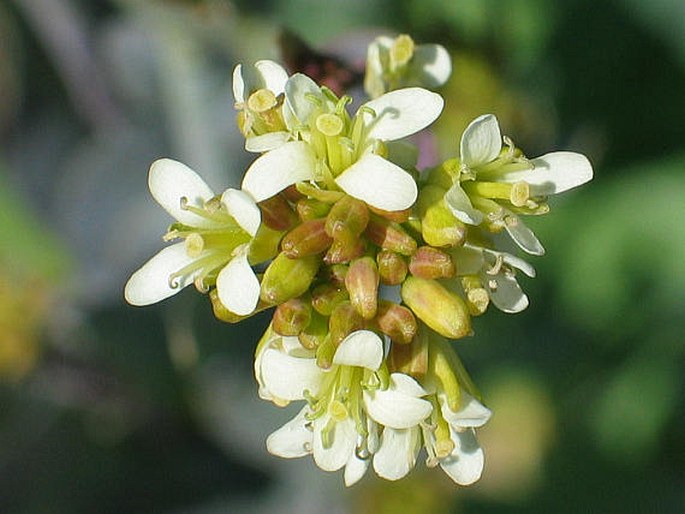
Distribution: Continuous distribution extends from the middle of Spain and England in the west and central Scandinavia in the north to central Italy, southern Balkans along the northern coast of the Black Sea and the Caucasus in the south and in the temperate zone to Central Asia in the east. In North America it grows across the whole continent except for the northernmost and southernmost areas. Introduced into central Africa and Australia. In the Czech Republic it is extended over the whole country except for the highest parts.
Ecology: This plant grows mainly in forest clearings and edges, along forest roads, on rocky and bushy slopes and on the banks of regulated streams. It favors alkaline to slightly acidic and nutrient-rich soil. Flowers from June to July.
Description: Biennial herb, 50–110 cm tall. The stem is erect, unbranched, rounded, grey-green, hairy at the bottom. The basal leaves are oblanceolate and lobed, cauline leaves are alternate, sessile, clasping stem with its base, lanceolate, entire, glabrous. The inflorescence is a raceme with more than 25 flowers. The flowers are actinomorphic, tetramerous, with 4–6 mm long pale yellow petals, about half longer than calyx. The fruit is a siliqua.
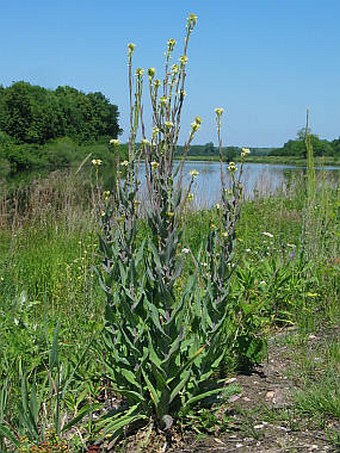
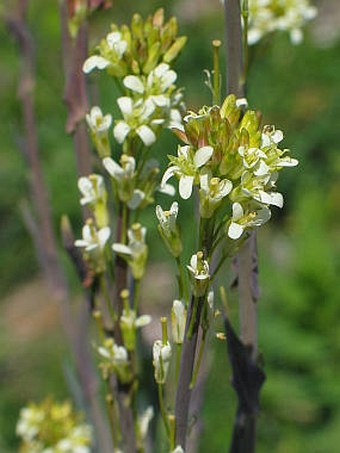
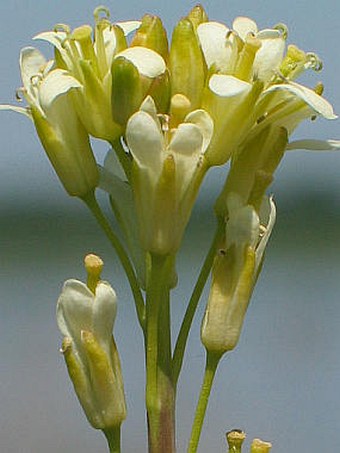
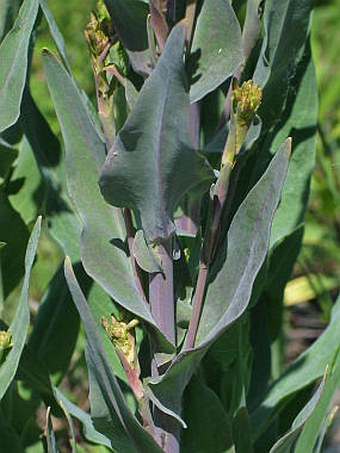
These images were taken at the Elbe near Velký Osek (May 19, 2007).


